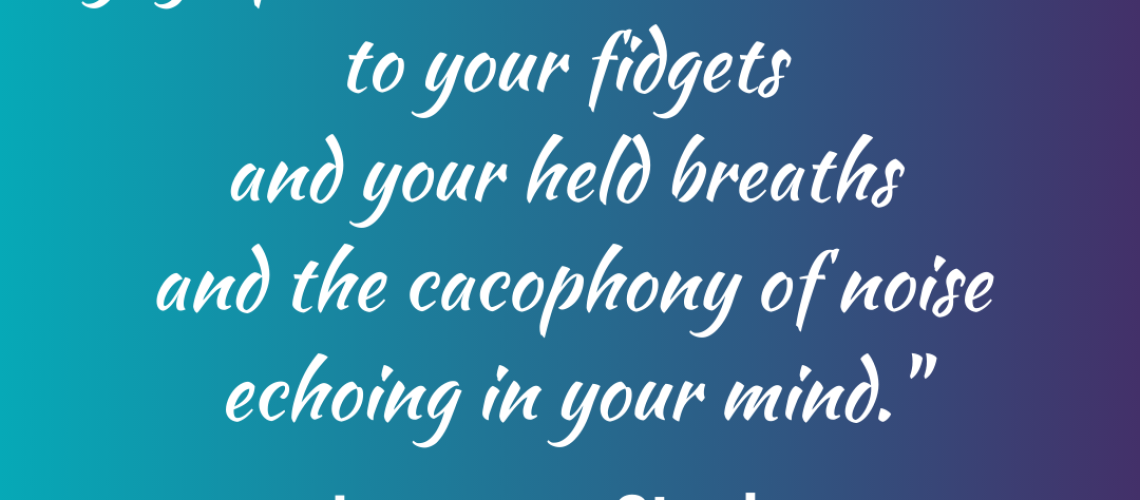When I first started practicing meditation regularly, I’d sit on the floor with my legs crossed (sukhāsana). But my knees wouldn’t touch the floor. When I looked around at the other people in the meditation class I couldn’t understand how their knees were down to the floor. I felt like a true novice.
Later our meditation teacher told this story…
“I was a pretty good tennis player in high school – I also ran and jumped. But I was not good at gymnastics. I was also attracted to yoga, particularly to meditation – and when I started practicing regularly, I knew it was going to be a lifelong project for me.
So after sitting daily for a few months my knees found their way down to the floor. I finally could sit comfortably for long periods without having to support my outer thighs with blankets and it felt great. Then I started exploring the possibility of sitting in half lotus. I found that after a few months it became rather easy to get my right foot up on my left inner thigh.
Of course I wasn’t content to stop there – I wanted the whole nine yards, the real deal, the true yogi experience – full lotus (padmāsana) here I come!
In India many old people squat comfortably waiting for trains, or smoking cigarettes, or eating, or sitting cross legged tending shops or fixing things. Sitting cross legged or squatting is much more normal in India (and other parts of Asia as well) because the lifestyle of regular people is a lot less chair oriented than it is in the west. So, I thought, maybe I just needed to work harder and do more. I heard yogis talk about the value and benefits of lotus pose for meditation – how it focused and cleared the mind, how it taught strength and fortitude, how it would lead to deeper spiritual experiences. Knowing very little about biomechanics, development, or use dependence at the time, I decided to go for it.
So I started sitting in full lotus. I began with about 5 minutes a day and built from there till I could sit for an hour. I found the more I did it, the easier it got. It was powerful. My mind could focus and I had expansive meditation experiences. When I returned to the states, I kept up my full lotus practice.
A few years later I got married, and a few years after that I had a baby.
I still practiced full lotus. But I began to realize that it may not be optimal for me. The reality is that I had never been able to really rock it. My thighs are prodigious and strong. Getting the soles of my feet to point straight up to the ceiling was just never going to happen.
Over time, I had started (unknowingly) to overstretch the lateral collateral ligament on my left knee. One day, my husband, son and I went to a playground. I told my husband I was going to sit on the park bench and meditate for a few minutes while they played.
The bench was narrow and I had to squish myself in tight to fit. I put my right foot on my left thigh, then I placed my left ankle on top of my right thigh and felt a little pop. It wasn’t anything major, but I knew it wasn’t good. When I finished meditating, I got up and noticed a soreness in my left knee that I hadn’t felt before. It was painful enough to let me know that my lotus pose days were numbered. I tried to do lotus several times after that, but each time the pain would intensify. My body was not having it. I needed to let it go.
While focused concentration in meditation was important to me, so was walking – as well as running, hiking, bike riding, and playing with my son. I decided it was time to retire lotus pose and avoid doing any more damage to my knee. Although lotus pose was great for concentrating and focusing my mind, not being able to do it forced me to find other ways to focus and concentrate. It forced me to be more mentally creative, and it allowed me to be more forgiving and compassionate to my body.
I needed to sacrifice the magic of lotus pose to save my wonderous, magical knees and enjoy the magic in other areas of my life as well as my practice.
We all have to make choices. We have to prioritize certain values over others, certain visions over others, and certain activities for others. That’s okay, that’s just part of the experience of living.
So now, when I meditate, I sit on a bolster or a blanket in sukhāsana. As if I’m a beginner again. And that’s just fine.”
It took me about four years to get my hips open enough to sit with my knees down. I didn’t go out of my way to get my hips to open. It was a happy result of the asana practice over time. And now it is the most comfortable way for me to sit on the floor.
Who knows, there may come a time when I need to sit in a chair to meditate, or even lie down. That’ll be fine too – because I may discover even more creative ways to find focus and concentration without sitting up or folding my legs.
Life is about adapting to whatever is present in the moment. Yoga practice should help us adapt – not make us more rigid.
